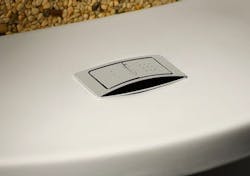The Lean and Green Builder: Lesson 9 - WaterSense makes cents
Walking in my home last evening, I was greeted with the usual excitement of children running around, the dog barking and my wife sharing the latest item in the home that needs my attention. The kitchen faucet decided it was time to throw an aerator, spraying water on any unsuspecting user. So, another trip to the hardware store for another “green” repair.
The best part about water conservation measures is the advances we have seen in the technology. In decades past, low-flow was synonymous with painful spray, poor water pressure, or additional flushes of the toilet. Today’s fixtures bare no resemblance to their predecessors. In fact, when placed side-by-side, a 2.2 gpm vs. a 1.5 gpm faucet only appears different when trying to fill the sink. A dual flush toilet outperforms most standard 1.6 gpf toilets. An Energy Star Rated dishwasher is typically a standard feature.
Water usage through these small measures will be reduced by at least 30% and as much as 50% without inconveniencing customers. Even better, the cost for all these improvements on a typical 3 bathroom home is less than $100. Payback on that investment for your consumer begins in the 3rd or 4th month of occupancy. And for those interested, retro-fitting your home, like I have done, runs about the same cost with a quick payback and great results.
